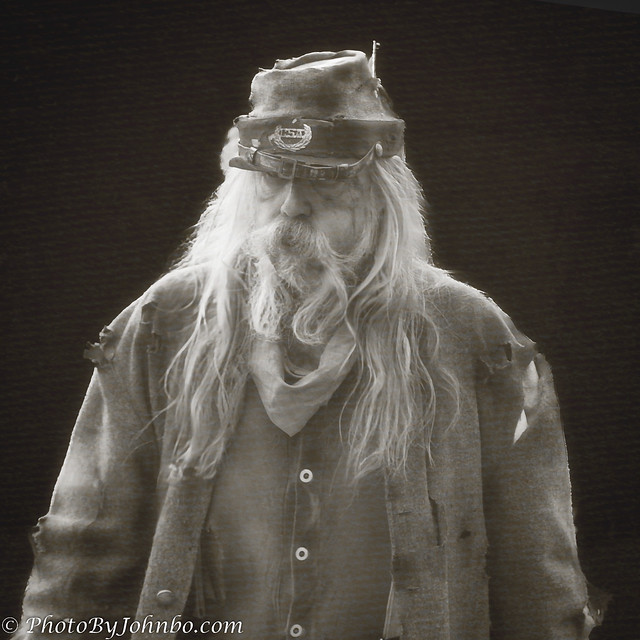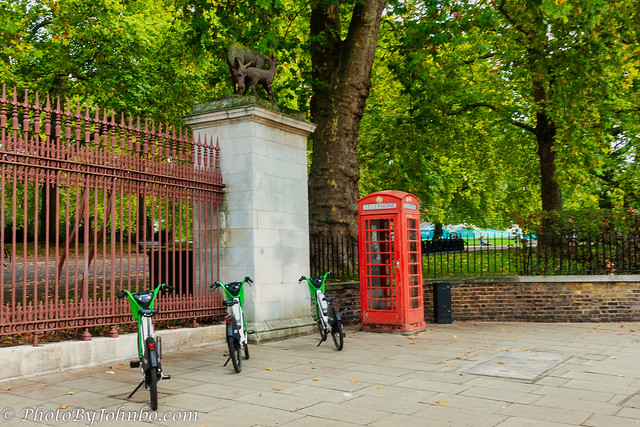
This week’s host, Sofia, challenges us to “look back.” She writes, “Can we remember a time of no mobile phones, or cassettes or floppy disks? Can we imagine a time when the way we represented things, anything, was limited to the knowledge available? This challenge is about time, how things evolve. How we changed in our way of seeing and representing them.” You can read her original post here.
For my challenge response, I decided to take a look back at the history of photography and I created a set of simulated images from digital photographs that represent how photographic printing evolved. The images are reworked from my gallery captured over the years, but the post-processing is designed to emulate photographic prints of an earlier time.
I used the Library of Congress website to provide me with the resources to learn about the earliest techniques, and I tried as best as I could, to simulate the sample images as provided in their examples. For example, the Daguerreotype was probably the earliest type of photographic print. The prints were on copper plates covered with a surface coating of iodine vapors to make the copper sensitive to light. You can find a complete description of the processes for these early photo types here.
Please note that computer screens aren’t really conducive to replicating the exact appearance of these early media. Allow me that artistic license to provide how I think they would appear if they were modern photographs of the existing prints.
The earliest paper prints, salted paper prints were used about the same time period as the Daguerreotype, this medium usually provided a brown or sepia-toned image. The image appears to be inside the paper, not resting on the surface. It’s hard to see details from the screen of this blog page. Click on any of these images to see them in 2K HD on my Flickr site. You can then click again on the image to see the detail like the paper texture that I applied to this photo when I recreated it.
The list of media for printing is much larger than I sampled here. I assume no one wants to view a dozen different examples of early printing techniques. I picked the three samples above as they were the types I remember from my photography classes in high school.
Cyanotypes use iron salts instead of silver to create a light-sensitive surface on the paper. The iron salts produce the blue color in the image. The medium was often used for proofs rather than final prints. I created this simulation by simply converting the image to black-and-white in Luminar Neo and shifting the tone of the highlights to a blue tint.
In photography class (1967-69 for me), our class used mostly Plus-X Pan from Kodak. This film generated a negative, and its fine grain made it ideal for studio work. Its ISO 125 rating meant it didn’t need super bright lighting in the studio. I made plenty of enlarged prints from the negatives in my photography class. This film was available until 2011.
What I enjoyed using more for its high speed was Tri-X Pan. The ISO 400 rating made it a great choice for low-light photography. Its higher grain was a noticeable distraction, but I loved loading the roll film into a developing container while my hands were in darkroom bags. I knew them as changing bags back in the day. The simulation above is a scan of an image captured on color film in 2001. I used Silver Efex 3 from DxO software to convert it to black and white. The software has a Tri-X preset that I applied to the image to give it that grainy Tri-X appearance.
In 2001, I took a trip to Washington state and took along my 35mm film camera, a Nikon (though I must say now, I don’t remember the model.) I found the prints and scanned this one for use as an example of a Kodachrome slide film, (if memory serves). I had the slides converted to prints at the time.
In high school, I used Kodacolor for prints and Ektachrome for slides. Slide photography was my favorite color medium. For a time, I developed and enlarged Kodacolor prints in my home darkroom as a teenager, but the chemical process was too technical for me and I often didn’t like the results. Ektachrome, however, was easy to develop and mount into slide frames.
The E6 process was much simpler than the C-22 process used for Kodacolor. I love the bright colors of Ektachrome, especially the warmer tones. To simulate the images I remember, I found this recent shot taken in London last year. I basically enhanced the Vibrance to simulate the bright colors. As a photography nerd, I often thought that Paul Simon’s song, “Kodachrome” should have been called “Ektachrome” as he says “for those nice, bright colors,” but then, no one else would have known what it was about.
Those iconic red phone booths are still around London, many non-functional. There are a few, however, that still have operating phones like this one near Kensington Gardens, but now, you can ride up to them on rented electric bikes and use a credit card to make a call from the phone in the booth.
These days, photos aren’t printed as much anymore, and we even have many more ways they can be printed. It’s no big deal to upload a digital image to a photo printing site and get anything from an 8×10 print to large frameless canvas. Prints on metal are also quite popular, and I find them to be my favorite printing medium for the very few images that I decide to print.
Thanks, Sofia, for an interesting challenge topic. I’ve enjoyed viewing everyone’s “look-backs” and taking the time to do a little extra photo processing to create my own post. Next week, Anne leads the Lens-Artists in another challenge. If you’d like to join in but aren’t sure how to participate, you can find the details here.
John Steiner





This is so awesome, John. I love your approach to the challenge. My dad as a extensive collection of slides when we were kids. I love the magic of projecting them in the dark, it was wonderful. I particularly like your cyanotype, that worked so well, it looks like the real thing 🙂
Thanks, Sofia! It was a fun exercise for me to review the history.
A few memories about photography and processing although I never did my own processing.
I found the early history interesting that there were so many printing options in those early times.
Great post. Very informative.
Thanks, Dawn!
Great post, JS. I have always been fascinated by what is usually considered the first photograph ever taken, by Nicéphore Niépce of France in 1826. His associate, Louis Daguerre, developed the first commercially viable photographic process, the Daguerreotype.
I will have to look that up. Thanks for the history!
Wow John, you really took this one to heart! I loved your approach and admire your taking the time to do the research and then to recreate the visuals. I was never much of a fan of slides I must admit, and don’t honestly ever remember taking any but I remember the boredom of viewing others’ vacations (UGH!!). Terrific approach, well-researched and illustrated!
Thanks, Tina. This challenge really made a historic post a natural. I admit to being influenced in my topic by your post about cameras. 😉
Great post, John! Wonderful approach to this theme. Thank you for taking time to explain. I have never taken slides, but do remember watching other people’s slide show. 🙂
I always preferred prints, but when I was doing my own processing, slide development was so mush less complicated.
What a lot of thought and work you’ve put into this post! And you simulations of past photography methods are very effective. I especially like the cyanotype landscape. I quite often use the cyanotype filter in Silver Efex as I’m drawn to that blue tinge.
We used to use mainly Kodachrome 35 mm slide film and develop it ourselves in the kitchen. I found the Ektachrome colours too bright for my taste, so I’m with Paul Simon 😆
Understood! I also used Fujichrome on occasion back in those days and found it comparable to Ektachrome in many ways.
What an in-depth and interesting post, John In college, I did processing but that’s been ages ago. 🙂 I also have lots of slides that I need to have converted to discs.
Thanks, Donna! Slide conversion to digital scanners is easy enough, but it often requires unmounting the slide from its holder, a tedious task, especially if they need to be remounted again.
Great post for this week. 😀 😀
Thanks, Cee,
Thank you John.Very interesting! I love all your posts and pictures
☘️
Thanks for following, Eithnea,
Fascinating, thanks John!
Thank you!
Very interesting experiments. I like the Ektachrome and Kodachrome effects. They work very well. I’ve also worked enough with the TriX to remember what that looked like, and yours is a good simulation. I guess I just havent spent enough time looking at cyanotypes and daguerrotypes to appreciate those.
I have no experience with the earliest formats, so tha T Library of Congress post was very helpful!
Oh my, John, you certainly put your all into this post. Thank you for the history and simulations of how photographs looked “in the day!” Well done!
Thanks, Anne! It was a fun exercise.
WOW. Quite the scholarly presentation, John. Excellent.
Thanks, John. The research was fun and interesting.
great post , i enjoyed all your processing examples.
Thanks, Zoé!
Such a fun post that I had to come back and read it a second time when I had more time to take it all in. So glad I did. 😊
Thanks for the positive comments. All of the great feedback I’ve received are icing on the cake. It was a fun exercise to create the images.
I liked your simulations and info – well presented!
Thanks, Nora!
Loved your post John, always love learning 😊 here is my take on the challenge https://thrumyeyes291981044.wordpress.com/2023/01/21/lens-artist-challenge-232-evolution-looking-back/
Wow! Well done.
Thanks, A-C!!
Hi, John. What a terrific post! I love your look back at darkroom photography (I loved the magic of it!) and your post processing simulations. What a great idea and a great execution of it!
Thanks, Patti. This was a fun exercise for me!
It WAS an interesting challenge, and your interpretation was impressive. Your lesson would be a great gift to a high school or college class. It truly is history to think of the ways photos have come around. And I remember being in the dark room for hours. I loved it, but it sure is different to just sit at the computer and plug in. To think you had your own in your home. It is no wonder you always bring such vast knowledge to us here. Excellent post!
Thank you, Donna, for the kind words! I was fortunate to have a dark closet that was large and easily converted to a dark room. It was ideal for a 15-17 year old high school photography student.